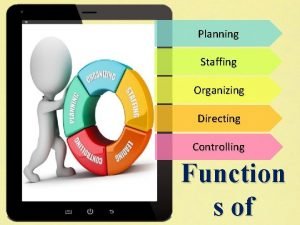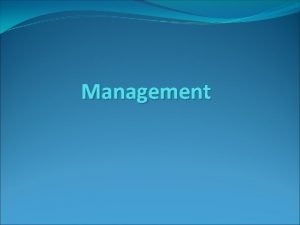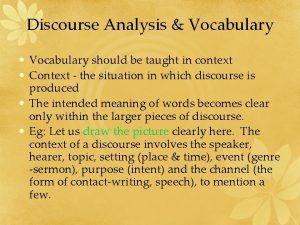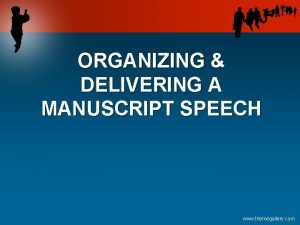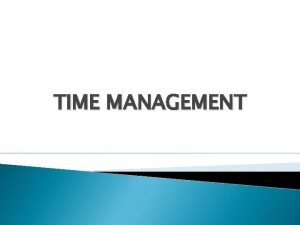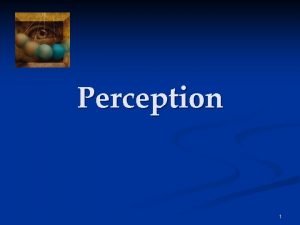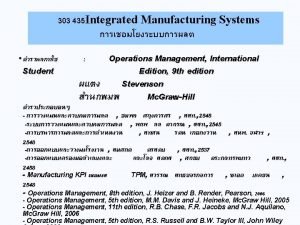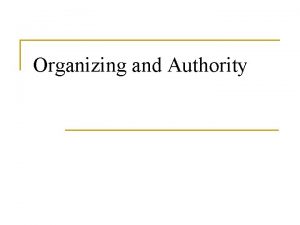DECISION MAKING AND ORGANIZING DECISION MAKING Decision making













- Slides: 13

DECISION MAKING AND ORGANIZING

DECISION MAKING • Decision making means selecting from various alternatives one course of action • Four steps in decision making • Identifying the problem (or opportunity) • Gathering facts • Making the decision • Implementing and evaluating the decision

IDENTIFYING THE PROBLEM • Is problem generic or unique?

GATHERING FACTS • Solutions to problems fit between the upper and lower limits of a decision • Upper limits of a decision include: • Limits of permissibility • Limits of available resources • Limits of available time • Limits of previous commitments • Limits of available information • Lower limits of a decision refers to what must occur for the problem to be solved • Consult those who will be affected by the decision, compare facts, and listen to their opinions

MAKING THE DECISION • Six analytical techniques • Cost-benefit analysis • Multiobjective models • Decision analysis • Systems analysis • Operations research • Nominal group technique

DECISION MAKING IN THE REAL WORLD • Must deal with bounded rationality and satisficing • Six biases • Seeing only one dimension of uncertainty • Giving too much weight to readily available or recent information • Being overconfident • Ignoring the laws of randomness • Being reluctant to audit and improve decision making

ALTERNATIVE APPROACHES TO THINKING • Empirical • Kantian • Pragmatic • Dialectical

ORGANIZING • Organizing is the grouping of activities necessary to attain a program’s objectives • Five types of organizations • Leader-follower • Consortium • Pyramid • Matrix • Teams

DESIGNING AN ORGANIZATION • Should the structure be “tight” or “loose”? • What should the units be? • What units should join together, and what units should be kept apart? • Where do decisions belong?

DESIGN CRITERIA • Clarity • Simplicity • Adaptability • Coherence

REASONS FOR REORGANIZATION • Growth • To create greater efficiencies and more logical combinations of functions • To reflect changes in public policy • To make government more politically responsive • Do they ever work? ?

RE-THINKING GOVERNMENT • Bureaucracies are steady but slow and cumbersome, not suited for technology age • Government organizations are monopolies with few incentives to innovate or improve • Politics! • Re-thinking government • What is your mission? • Is it still the right mission? • Is it still worth doing? • If we were not already doing this, would we go into it now?

FURTHER DISCUSSION?
 No decision snap decision responsible decision
No decision snap decision responsible decision Dividend decision in financial management
Dividend decision in financial management Planning organizing directing and controlling are the
Planning organizing directing and controlling are the Directing coordinating staffing
Directing coordinating staffing Organizing students to practice and deepen knowledge
Organizing students to practice and deepen knowledge Example of academic text
Example of academic text Who are manager
Who are manager Reiteration in discourse analysis
Reiteration in discourse analysis Organizing life's diversity section 3 domains and kingdoms
Organizing life's diversity section 3 domains and kingdoms Organizing students to practice and deepen knowledge
Organizing students to practice and deepen knowledge Organizing and delivering an entertainment speech
Organizing and delivering an entertainment speech Types of entertainment speech
Types of entertainment speech Time management is the process of organizing and planning
Time management is the process of organizing and planning Selecting organizing and interpreting information
Selecting organizing and interpreting information



